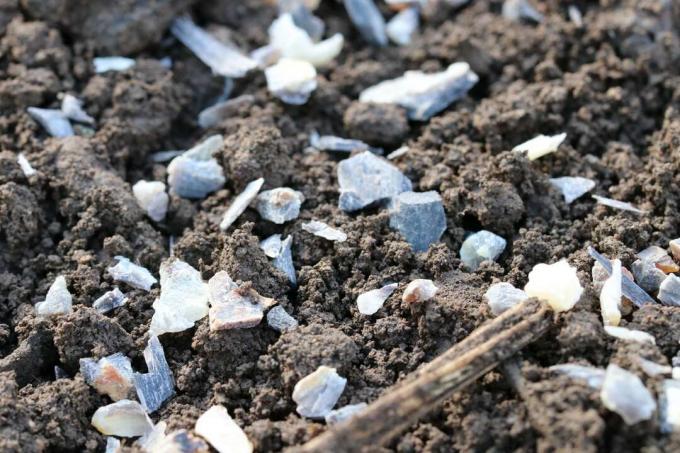
The frost-hardy skimmia with its beautiful flowers and red berries is a very popular winter ornamental plant in this country. It is easy to care for, but is sensitive to care mistakes. This can be the reason for the Skimmia getting yellow leaves.
In a nutshell
- various causes of yellow leaves
- too much direct sun at the site
- Soil not acidic enough
- too few nutrients for beautiful leaf color
- Leaf chlorosis due to excess lime
Table of contents
- Causes of yellowing
- First aid
- Measures for leaf chlorosis
- Help with nutrient deficiencies
- preventive measures
- frequently asked Questions
Causes of yellowing
Originating from Asian mountain forests and evergreen rhombaceous (Rutaceae) with its dark green, leathery leaves up to ten centimeters long sets beautiful accents in the garden or in a container on the balcony and terrace at any time of the year. Usually the skimmie (Skimmia japonica) does not require much care. Occasionally, however, yellow leaves may appear on the plant. If they only occur sporadically, it's not that bad. This is a natural process, i.e. old leaves that are shed. The skimmia regularly drives out new leaves during the main growth phase. However, an excessive occurrence of yellow leaves is not normal. There are various reasons for this:

- Location with direct sunlight
- Room air too dry with room keeping
- occurring waterlogging
- too much lime in the soil
- formation of leaf chlorosis
- Errors in the nutrient supply (fertilizer too calcareous, over-fertilization or lack of nutrients)
- Soil not sufficiently acidic (pH too high)
- drastic temperature change
- outdated shoots
- pests like vine weevil
Tip: Yellow leaves shed in the fall are nothing to worry about. This is how the Skimmie prepares for the coming hibernation. In the spring it drives out again.
First aid
If the Skimmie gets more and more yellow leaves, it urgently needs help. Otherwise it can quickly happen that the graceful plant dies completely. Before the first remedial measures can be taken, the causes of the appearance of the yellow leaves must be determined. General measures are
- Change of location if it is too sunny
- Adjust watering behavior
- keep only moderately moist
- Root ball must not dry out

Tip: A layer of mulch on the root disk prevents rapid drying out.
Measures for leaf chlorosis
Too much lime damages the skimmia, it reacts with yellow leaves. We recommend for the Skimmia an acidic substrate with a PH value between 5 and 6. Next to that is Water with lime-free water, e.g. B. rainwater attached. Water that is too hard causes the lime content in the soil to rise too quickly. As a result, the roots can no longer absorb iron from the soil. However, iron is important for healthy foliage. help is provided by
- Repot the plants in a suitable substrate
- Undermine rhododendron soil in the bed
- Compensate for iron and magnesium deficiencies with foliar fertilization
- use liquid iron fertilizer with the addition of a few splashes of washing-up liquid
- Sprinkle undersides and tops of leaves
- save flowers
A notice: Do not apply liquid fertilizer in direct sunlight. There is a risk of plant burns.
Help with nutrient deficiencies

Since the skimmia is an evergreen plant, it needs sufficient nutrients mainly during the growth and flowering period. In the event of a deficiency, the nutrients that are still available are not used for leaf formation or growth. -coloring used, but for the formation of flowers and berries. remedy here
- fertilization of bedding plants every three to four weeks with acidic compost or plant manure, horn shavings
- Supply potted plants with liquid fertilizer every two to three weeks
- additional dose of Thomaskali end of August to beginning of September
A notice: The fertilizer used must not contain lime. Fertilizers are also well suited for azaleas, Rhododendrons or hydrangeas.
preventive measures
As the saying goes: "Prevention is better than cure." Before planting a Skimmia, one thing should be considered in order to avert later damage to the plant:
- right choice of location
- create an acidic soil environment
- Provide soil with sufficient humus
- regular watering
- water even in winter
- Always keep root ball moist
- stop fertilizing in winter
- additional nutrients during the growth phase
- regular pest control

A notice: Yellow leaves are more common on a skimmia kept in pots or tubs than on plants planted out in the garden.
frequently asked Questions
The Skimmie loves a light to partially shaded place. She is also thriving in the shade, but there it forms fewer flowers and the bright red coloring is a little weaker. Sunny locations should be avoided, as the leaves curl up here and lose their green color. A place in the shade or under is ideal conifers. The soil must be lime-free, well drained, acidic to slightly neutral and very rich in humus.
Normally no pruning is necessary because the skimmia grows very slowly, only 5 to 15 cm a year. However, if it gets too high, pruning can be done after flowering or while it is still flowering in May or June. Only male, sweet-smelling flowers are removed. The females remain standing, otherwise no berry decorations are formed in the fall. A radical cut is to be avoided. Thinning out, on the other hand, ensures denser growth and prevents balding.
If the Skimmia is in too dark a place, flowers will not form. In addition, it needs a loose, slightly acidic and humus-rich soil for lush flowers. From spring through summer, the soil must be kept moist, but not wet. Furthermore, between April and September, fertilization must be carried out every three to four weeks in the bed and every two to three weeks in the bucket.



